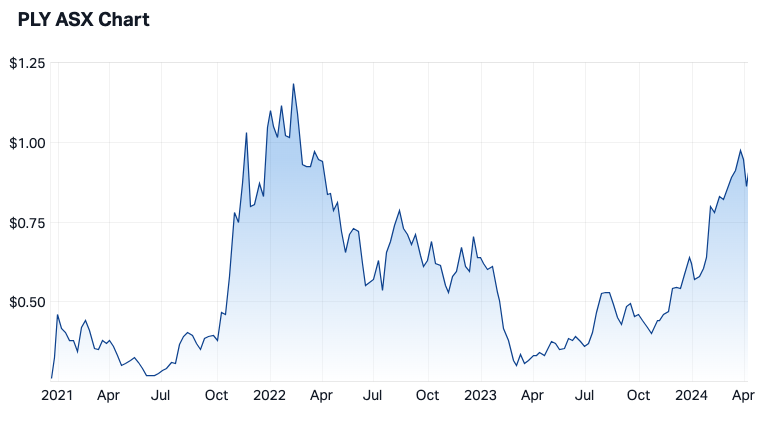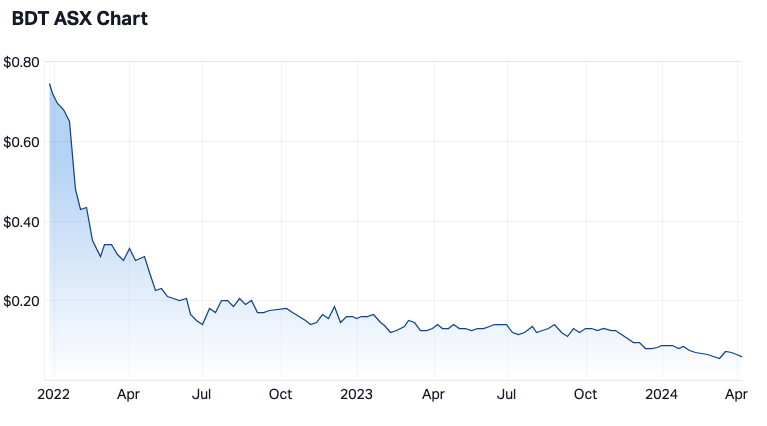As investors ponder whether large-cap company valuations are now as good as they’ll get – the ASX 200 still hovering at record highs – interest is shifting toward smaller companies.
We’re seeing it in Australia, with the ASX Small Ordinaries up around 20% since October 2023 – when the US Federal Reserve’s policy easing prompted a rally in global markets – versus a gain of just over 15% from the ASX 200 in the same period.
We’ve also seen microcaps on a tear, the ASX Emerging Companies index rising by a similar margin.
In the following wire, the second of a multi-part series , I speak with small companies investor Dean Fergie, director and portfolio manager at Cyan Investment Management. Fergie explains how he identifies opportunities, identifies red flags to watch for, and names a few companies worth watching – including one potential 5-bagger for the year ahead.
.png)
How do you find the best micro-cap opportunities?
In this part of the market, there’s a lot of legwork involved, explains Fergie. He notes that companies in his $50 million to $200 million market cap sweet spot usually don’t have the advantage of sell-side research coverage or other secondary sources of information.
“There’s no magic formula or screening process to find the best opportunities out there. There’s not enough detail or history in the small- and micro-cap numbers to get the granular detail to pick a winner,” Fergie says.
“Our advantage in being professional investors is that many of the opportunities come knocking on our door.”
From here, it’s a numbers game in terms of meeting with as many companies that are potential investment opportunities.
When first presented with a potential investment opportunity, establishing a baseline market valuation is Fergie’s first step, multiplying the share price by the total number of shares on issue and factoring in net debt or cash. He then looks at the company’s latest 4C cash flow report.
From this, he gauges the firm’s top-line revenue, cost base, and how well-funded it is.
“If those numbers make sense, that’s a good starting point for a business you might look at a bit further,” Fergie says.
What are the red flags for you?
Cyan Investment Management is solely focused on the Australian market and doesn’t put any money to work within the resources, biotechnology, medical or real estate sectors.
And as we often hear from asset managers, success is often as much about what you avoid as what you buy.
“We know what we’re not good at…you can’t be in everything,” he says. “Invest in what you have an intellectual understanding of,” Fergie says.
To illustrate his point, Fergie says fintech firm Iodm Limited (ASX: IOD) crossed his desk recently – a $120 million market cap company whose last quarterly cash flow report indicated $400,000 of revenue for the quarter.
“I don’t want to pay 100 times revenue for a business even if it has a really promising future. Those kinds of numbers look ridiculous.”
The advantage of being small
Fergie says Cyan Investment Management’s current funds under management of $25 million enables them to look “further down the curve” for opportunities.
“If we were managing $200 million, for anything to have a material impact on the fund, we would have to have an investment stake of $4 or $5 million, which is very difficult to build in companies with a market cap of $25 million or less,” he says.
Though the fund generally invests in firms with market caps of $50 million or more, it can hold companies as small as $10 million, “that are still going to make some difference to the overall outcome of the fund.”
He concedes it can be a disadvantage in that smaller funds aren’t writing as much brokerage,
“You’re not quite as material as a client, but again, it just opens up a whole range of the market that the bigger players can’t play in as financially effectively as we can.”
WHAT IS YOUR MOST SUCCESSFUL MICROCAP STOCK PICK?
Playside Studios (ASX: PLY)

Fergie nominates the Melbourne-based gaming developer as his top stock pick in the 10 years since launching Cyan Investment Management. A company he bought when it IPO’d in the backend of 2020, it has been in the fund since then.
“It’s one that we’ve grown the position in over time, as the company has proven itself,” Fergie says.
He describes Playside as an outlier in an industry renowned for its high turnover of companies.
“They’ve been a major player on a global scale and count companies such as Facebook parent Meta, Activision and Blizzard as clients,” Fergie says.
When Cyan Investment Management bought the position, the firm had good revenue and a clear pathway to profitability.
Fergie also liked the ownership structure of the business, with three executives each owning a stake of around 20%: “There was a lot of skin in the game.”
The stock has seen its share of volatility, its price heading as high as $1.20, when Non-Fungible Tokens were trending and Playside had minted some coins for one of its games. This saw the company rake in $10 million of revenue in a single quarter.
“But it’s come back to about 90 cents and has been a four or five-bagger since then,” Fergie says.
AN UNDER-THE-RADAR STOCK WITH THE POTENTIAL TO RUN FROM HERE
Birddog Technology (ASX: BDT)

Fergie believes this firm, a manufacturer of audio-visual equipment including cameras for conference applications, is drastically mispriced.
“The numbers on the business look crazy at the moment…it’s got a market cap of $11 million and the cash on the balance sheet sits at $21 million – plus $12 million of inventory,” Fergie says.
He believes the opportunity is presented by some of the firm’s challenges since first listing at the end of 2021. These include supply chain difficulties and a supplier contract dispute.
“It’s one of those businesses that investors have been so disappointed and frustrated with, they’ve been willing to cut their losses and take a capital loss,” Fergie says.
“But if they get their operating business back on track, it could go up four or five times easily in the next 12 months, just because it’s been so oversold recently.”
What do you think?
Do you hold any of these companies or have other Aussie micro-caps on your watchlist? Let us know in the comments section below.
Don’t forget to click “Follow” below to be notified when upcoming interviews in this series are published – you can read the first wire here.

